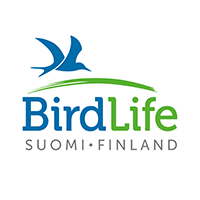Productivity of the Great Egret (Ardea alba) and Grey Heron (A. cinerea) in mixed heronries in Poland and behavioral response of fledglings to a drone
DOI:
https://doi.org/10.51812/of.119429Keywords:
breeding success, mixed-species colony, wildlife monitoring, productivity, unmanned aerial vehicleAbstract
Productivity of avian populations provides important demographic information helpful in understanding population dynamics and processes involved during species expansions. We tested the hypothesis that the productivity of the two species of ecologically similar herons that breed together in mixed heronries is related to their expansion status. We expected the expansive species, colonizing the new area and increasing in numbers, to outperform the native species, whose abundance is stable. We studied the breeding success of two herons in mixed colonies in eastern Poland in 2018: Great Egret (Ardea alba) (an expansive species, increasing breeding range and population size), and the Grey Heron (Ardea cinerea) (a native species, stable breeding population). Mean productivity (number of young per nest) was similar for Great Egret and Grey Heron and appeared correlated to each other in mixed heronries. Productivity of both species was unrelated to the colony size, but Grey Heron tended to have higher productivity as the proportion of Great Egret nests in the colony increased. Similar productivity of both species can be explained by the sufficient food resources coupled with the low level of competition. The two species differed significantly in their response of young to the approaching drone: the mean probability of a young Great Egret adopting an upright display was 0.47 compared to only 0.18 in a young Grey Heron (P=0.025). This was unlikely an age-related difference as the fledglings of both species were at a similar stage of development, but may represent some kind of a species-specific trait. Our research once again shows that UAVs allow a quick and non-invasive study of the size of the breeding populations and reproductive performance of herons, egrets and other wading birds.
Downloads
Published
Versions
- 2024-02-20 (2)
- 2024-01-22 (1)
Issue
Section
License
Copyright (c) 2022 Adam Zbyryt, Cezary Mitrus, Grzegorz Neubauer

This work is licensed under a Creative Commons Attribution 4.0 International License.








